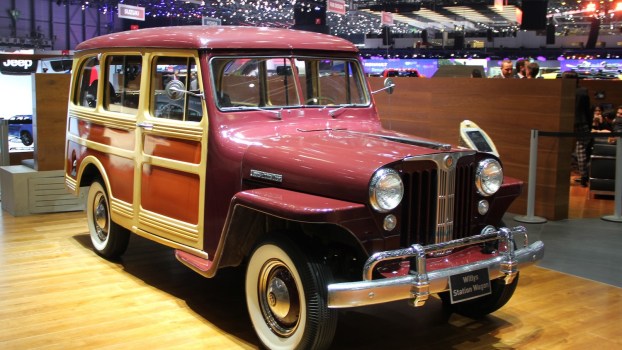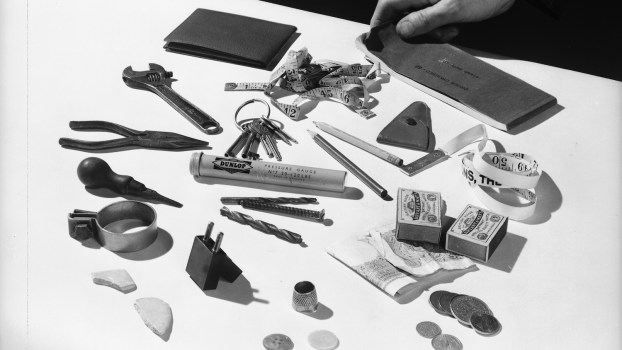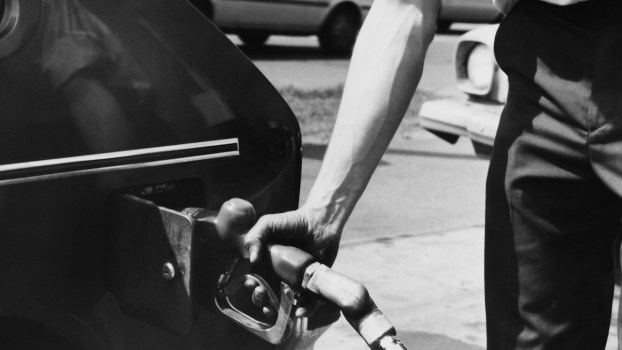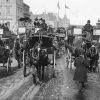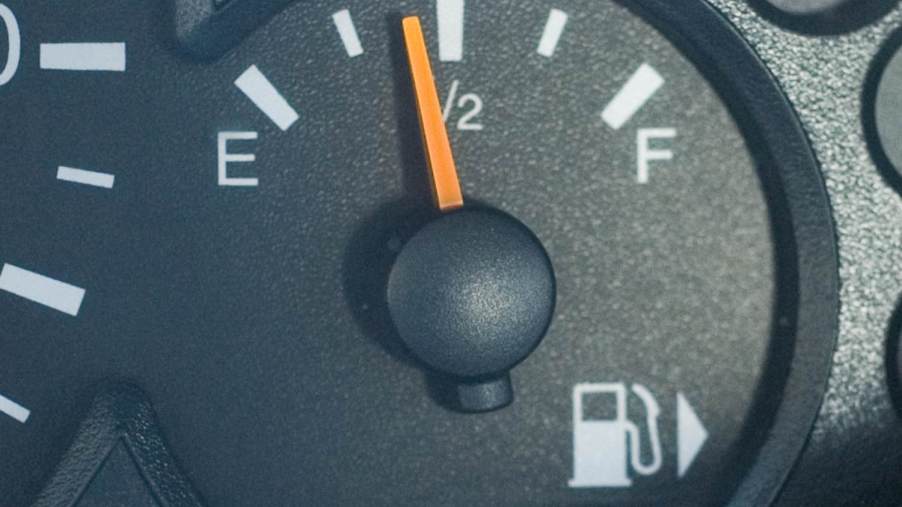
What Does the Arrow on Your Dashboard Gas Gauge Actually Mean?
Next time you’re in your car, take a real look at your fuel gauge. It likely has a little outline of a fuel pump and an arrow. This gas tank arrow may point left. Or it may point right. The point of this arrow (pun intended) is to tell you which side of your car your filler cap is on. If you are in a new car, or a rental car, it can save you valuable time while pulling up to a fuel pump.
Why does your fuel gauge have a gas tank arrow?
Because of a rainstorm in April 1986. True story. Ford designer Jim Moylan was cruising in a company car, needed gas, and unknowingly pulled up to the wrong side of the pump. Running around the car to reach the filler cap, he got drenched…with inspiration!
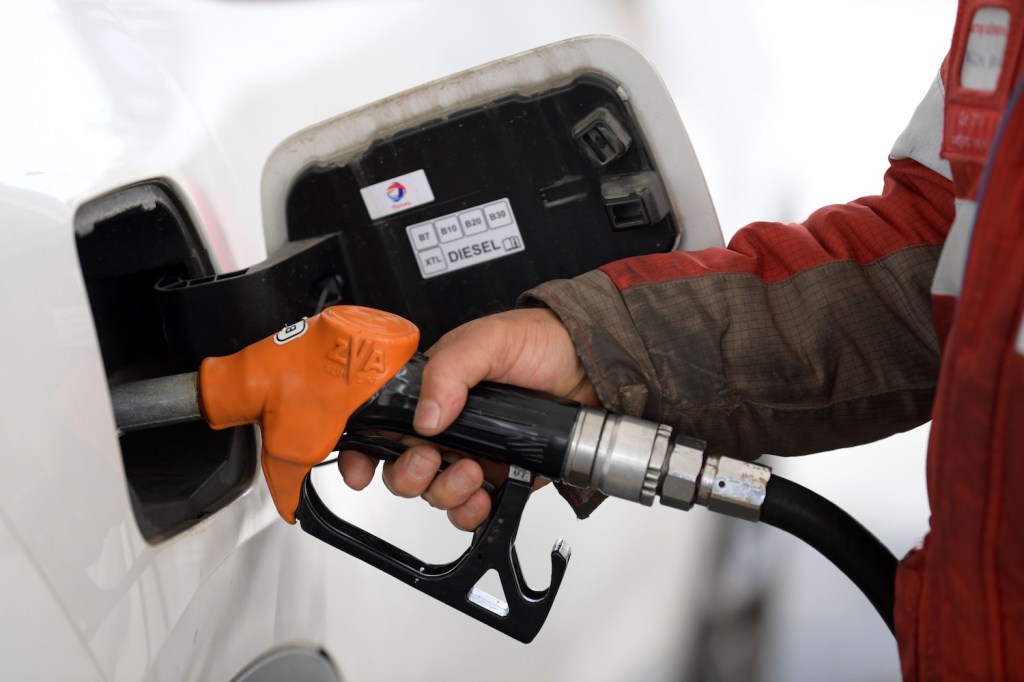
Moylan raced into the office and wrote up a memo. He recommended Ford fuel gauges be printed with a gas tank arrow pointing toward the side of the car with the filler cap. The company brass liked the (relatively cheap) idea and rolled it out on the 1989 Ford Escort and Mercury Tracer.
But wait, there’s more! Back in 1976, Mercedes-Benz changed up the dash of its W123 and added an elegant solution to the gas tank arrow problem: a low fuel warning light shaped like an arrow, pointing to the filler cap. So efficient! So Mercedes!
Perhaps, too efficient. Whether motorists missed the point or the gimmick cost too much, Mercedes stopped using arrow-shaped low fuel lights. The Mercs eventually jumped on the Ford bandwagon, adding a regular printed gas tank arrow to its 1997 G-Class SUVs.
You can see how the gas tank arrow works for yourself in the video below:
Should the gas tank be on the driver side or passenger side?
That is a hotly debated question. Some automakers (mostly in Europe and the U.S.) claim a gas filler cap on the driver’s side is more convenient because you don’t need to lap your car to fill it up. But other automakers (predominantly in Japan) argue that a passenger-side filler cap may save your life if you must top it off out of a jerry can by the side of the highway.
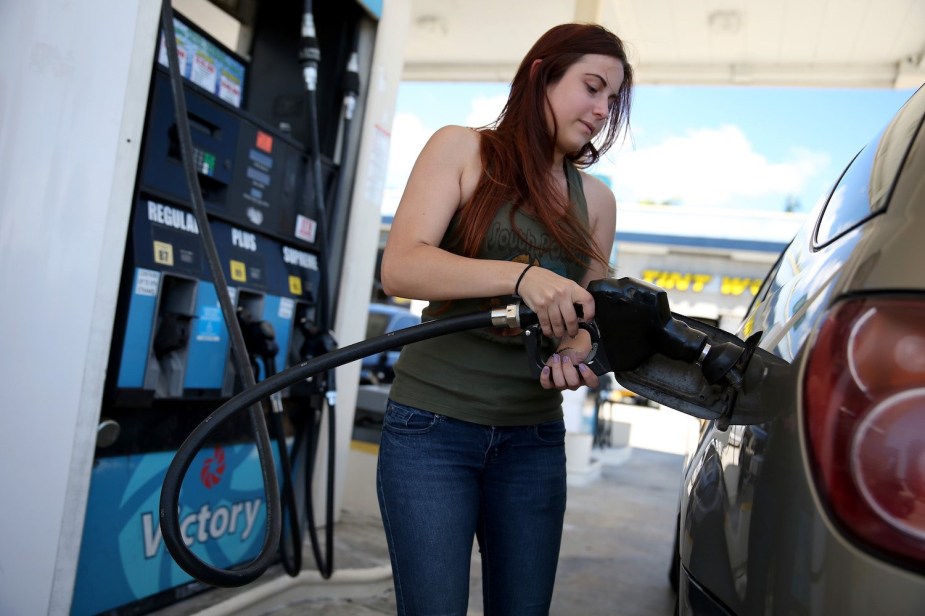
The entire reason we need a gas tank arrow printed on our fuel gauges is that automakers seem to slap the filler cap on the left side or the right side–willy-knilly. And they make some compelling arguments for the respective sides of their fuel filler caps. But the truth probably isn’t as dramatic.
Many modern cars, especially high-end ones, have a cable release for the fuel filler door. It’s much simpler just to place the door behind the driver than try to route a cable across the drivetrain and to a door on the passenger side of the car. Other modern cars, such as Mercedes industrial vans with a driver’s side sliding door, have a passenger-side filler cap just for packaging purposes.
So why do Japanese cars tend to have a filler cap on the passenger side? Well, in Japan, you drive on the left side of the road: the “driver’s side” of the car is the right. Japanese cars are also engineered with the filler cap on the “driver’s side.” When these automakers exported them to the U.S., they didn’t bother relocating the fuel filler. And I guess the exercise of walking all the way around our car once every 300 miles won’t kill us Americans.
So what about other right-hand-drive countries, such as England? Well, for a while, Jaguar built cars with both left-hand and right-hand filler caps. That’s one way to skin a cat.
Why aren’t gas tank sides standardized?
The government controls many aspects of automobiles: the side the driver sits on, the layout of the controls, and how resilient they must be to a crash. So why can automakers throw a gas filler cap on any side they want? Honestly, the NHTSA is probably just happy filler caps aren’t on the rear bumper anymore.
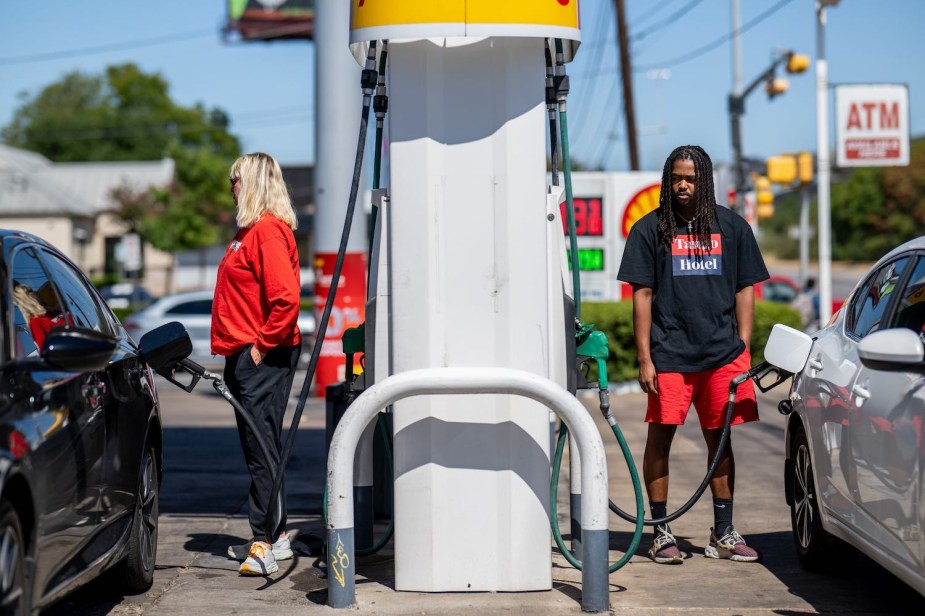
I remember my dad used to have this dope old 1964 Plymouth Fury. That car had a filler cap set into the rear bumper, hidden behind a flip-down license plate holder. So rad!
But there was only one problem with our beloved Plymouth. Even a low-speed rear-ending could have snapped off that filler cap and drained the fiery contents of the tank onto the road. That’s one way to escalate an otherwise minor accident. Especially considering how, in 1964, basically everyone smoked.
The NHTSA decided to do something about this literal recipe for disaster. Today, the gas filler cap must be on the “widest” side of the car. It also must be inside any crumple zones, so as protected as the passenger compartment. This leaves automakers with one choice: left or right? And considering all the other rules around filler cap placement, the NHTSA may be happy to give them that one. But with filler caps on both sides, the gas tank arrow was an important invention.
So, do you think gas stations would run smoother if all the filler caps were on the same side? Or is it better that half are left, and half are right? Let us know in the comments below.
Next, find out what the E and F on your gas gauge mean (it’s not “full” and “empty”), or learn what will happen if you put the wrong fuel in your car in the video below:
